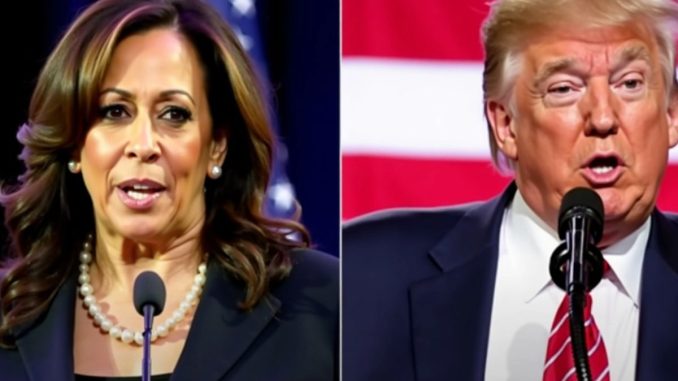
As the 2024 presidential election nears, the fate of student loan forgiveness is at the forefront of many borrowers’ minds, particularly as Vice President Harris and former President Trump have such wildly differing viewpoints. Federal student loan debt in the United States has surpassed $1.75 trillion, affecting approximately 43 million Americans.
Key Takeaways
- Federal student loan debt in the U.S. exceeds $1.75 trillion.
- Vice President Harris supports expanding student loan forgiveness programs.
- Former President Trump opposes student loan forgiveness and aims to repeal existing programs.
Harris’s Approach to Student Loans
The Biden-Harris Administration has implemented several aid programs that have contributed to total debt relief, despite strong opposition. If Kamala Harris becomes president, she will build on these policies, working to provide widespread student debt relief for millions of borrowers by expanding programs like income-driven repayment plans and Public Service Loan Forgiveness.
“We see a future where every student has the support and the resources they need to thrive,” Harris stated in a speech made in July. She noted that the Biden-Harris administration has forgiven student loan debt for nearly five million Americans. Nearly $160 billion in federal student loan debt has been forgiven since Biden took office, according to the U.S. Department of Education.
The administration’s efforts have been focused on targeting areas for forgiveness for borrowers who are most in need. Borrowers most in need have included those facing financial hardship, holding balances greater than the initial amount borrowed due to accrued interest, those who are eligible for forgiveness but have not yet applied, those who have been in repayment for 20 years, and borrowers who attended institutions that show low financial value.
Here’s a closer look at various loan forgiveness programs Harris will likely continue expanding if she takes office:
- Borrower Defense Loan Discharge: If your college misrepresented details that led you to enroll there, you may have grounds to apply for borrower defense loan discharge. The administration says this has led to the discharge of over $28 billion in debt for 1.6 million borrowers.
- Income-Driven Repayment Plans: These plans base your monthly student loan payment amount on your income and family size. There are four plans — the Pay As You Earn (PAYE) repayment plan, the Income-Based Repayment (IBR) plan, the Income-Contingent Repayment (ICR) plan, and the Saving on a Valuable Education (SAVE) repayment plan.
- Public Service Loan Forgiveness (PSLF): This program forgives federal student loans of borrowers employed by the government or certain non-profit organizations after ten years of on-time payments or 120 qualifying monthly payments. These efforts have reportedly led to the forgiveness of over $62 billion in student loan debt.
- Total and Permanent Disability (TPD) Discharge: More than half a million borrowers with disabilities have received over $14 billion in relief through the Total and Permanent Disability Discharge program, according to the White House.
Trump’s Approach to Student Loans
Trump stands firmly in opposition to student loan forgiveness. If he becomes president, his efforts will likely be focused on getting student loan forgiveness programs enacted by the Biden administration repealed or restricted.
During Trump’s presidency, he proposed significant cuts to student aid programs and called for the elimination of Public Service Loan Forgiveness (PSLF), Federal Supplemental Educational Opportunity Grant (FSEOG) programs, and subsidized federal student loans.
And while Trump has made no statements regarding his specific plans to revoke student loan forgiveness initiatives if elected president, he is very vocal about how he views these initiatives. He has referred to Biden’s plans to cancel student loan debt as "not legal" and “vile.”
Ultimately, whether or not loan relief programs are actually repealed during a Trump presidency could heavily depend on whether or not there is a Republican majority in Congress. A set of conservative policy proposals developed by The Heritage Foundation, called Project 2025, calls for significant changes to how student loans are managed, including the phasing out of existing income-driven repayment (IDR) plans.
Bottom Line
Ultimately, it’s still too early to determine exactly how the election will impact student loans. Because of the uncertainty of whether or not loans will be forgiven, it’s difficult for many borrowers to make long-term plans concerning their debt. Borrowers are advised to focus on repayment and plan conservatively. For those struggling to meet loan obligations, it is recommended to communicate with loan services to review any repayment options or hardship opportunities available.

